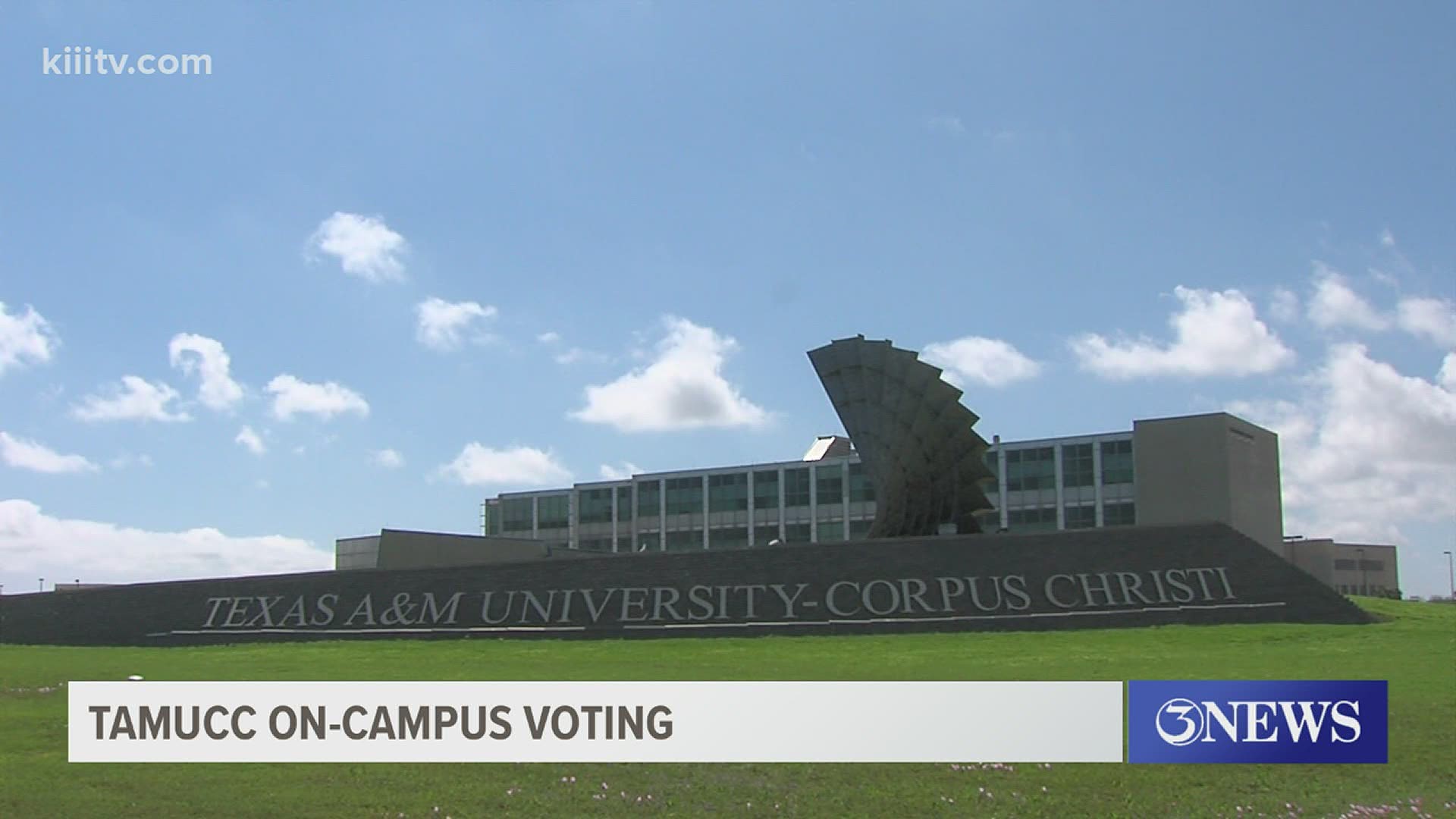CORPUS CHRISTI, Texas — Think back to when you voted for the very first time, and if you did it as soon as you were eligible, it may have been your first year of college.
On the Texas A&M University - Corpus Christi campus, there's a push to encourage students, staff and faculty to vote. One thing that makes that a bit easier: the on-campus polling site at the Michael and Karen O'Connor building, Room 135.
In addition to the university community, the on-campus polling location is open to all registered voters in Nueces County.
According to the Nueces County Elections Department and District Clerk's Office, in just the first few of days of early voting, that particular voting location counted 1,068 voters (414 on Day 1 of early voting, 358 on Day 2, and 296 on Day 3).
To learn more about this voting site (location, hours, safety protocols), click here.
Dr. Sanne Rijkhoff is an assistant professor in political science at Texas A&M University - Corpus Christi.
"Election time is – these are my holidays!"
She says when it comes to educating students about voting and elections, some of the key goals for her as a professor is to make sure her students know exactly how to vote and who/what is all on the ballot.
"Students think that the only thing they can vote for is the presidency, and they don't realize that other races are on the ballot as well. Yeah, you get to vote for your representative in the House of Representatives, there's a senator on the ballot, there are several state races including judges that you can vote for and of course, this election cycle, the mayor of Corpus Christi."
TAMU-CC is part of a national collaboration that analyzes voter registration and turnout among students, called the National Study of Learning, Voting and Engagement (NSLVE). According to reports by the NSLVE, data showed that over the years, that registration rates among students at TAMU-CC increased from 2012 to 2016 from 71.4% to 77.4%. Overall, voter turnout among students at TAMU-CC also increased from 36% in 2012 to 38.5% in 2016.
As far as early voting, this also appears to be growing in popularity among TAMU-CC students: in 2012, 48% of student voters voted early, and in 2016 64% of student voters voted early.
The number of registered student voters and early student voter turnout isn't available just yet for this voting period. Rijkhoff says this data is typically available following the election, however:
"When I look at the voter registration data at TAMU-CC, the increasing voter registration rate is encouraging and I think that is something that will be continued into the 2020 election as well."
Some students we spoke with on campus have already taken advantage of the early voting opportunity available at the university.
"I voted on the first day of early voting," said Andrew Leeton. "It's our voice, it’s our chance to speak our voice and gives us the opportunity to elect officials that we believe will speak our voice and represent their constituents. As a student, I think it’s good to get people in that are going to help our education and work for our students."
"I have seen a lot of students voting, I'm here at the building and I’ve seen long lines all day yesterday and today too," said Kaybree Vasquez. "I think it’s really important to get out there and vote. With our votes we can make a difference. Every vote counts."
As a political science professor in this current political climate, Rijkhoff says it presents a lot of learning material for her classes.
"Even though there’s a lot of tension and there’s a lot of conflict between the parties and candidates, I always find it a treat to talk with students and explain why things are happening. This is why the political rhetoric is so heated, this is why people behave in debates as they do.”
On the night of the next scheduled debate (Oct. 22) and election night (Nov. 3), Rijkhoff said the TAMU-CC political science club is organizing socially-distanced watch parties for a limited number of students who must first sign-up and check-in. The gatherings are meant for students to discuss what happens right then and there with political science professors and experts.
"What most of us expect, me included, on November 3rd is that we’ll be watching during the evening hours, probably wrap it up around 10 p.m. knowing we most likely will not know the outcome of the election by then," said Rijkhoff.
"It's pretty difficult to make an estimate of how long we’ll have to wait, but given that many states have increased their option for mail-in ballots might make it a little of a longer result period. Some states are not able to process mail-in ballots until election day itself and that just takes time. Opening the envelopes, checking the signatures are correct, and then counting the ballots. The hope is the sooner the better!"
Early voting runs from now through Oct.30th. The deadline to request a mail-in ballot is Oct. 23. Election Day is Nov. 3rd.
For more voting information from the Nueces County Elections Department, click here.

